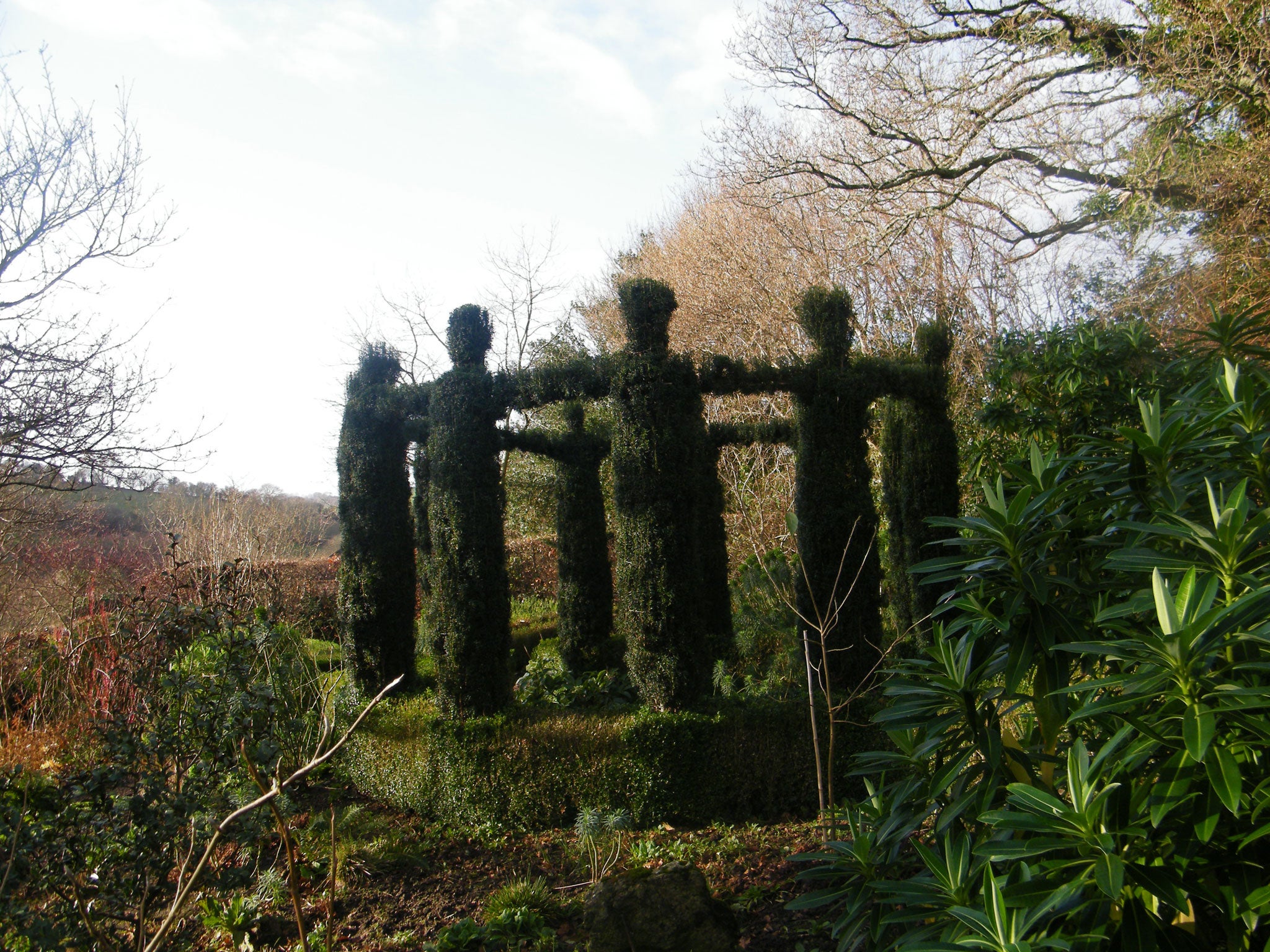Anna Pavord: How to craft a living garden feature
It takes time and patience says our gardening correspondent, but the results can be captivating

I learnt a lot, laying out our present garden. But the decisions taken, the lines laid out, were all dictated on the spot by the lie of the land, not by drawings. The main area of the garden lies across the yard, and slopes up and away from the house. We had to get from the bottom to the top without feeling we were preparing for an ascent of K2.
At the topmost corner of the garden I thought we'd make some kind of summer house as a reward for anyone who got up there. But tramping up and down the bank, trying out routes, it became obvious that the path lines that were most comfortable did not gain us enough height.
That's when I had the idea of making a kind of flat landing, a roundel, which would break the journey up the bank, but would also provide the means of gaining the necessary height, focused as it were, all in one place. So we marked out a circle 15ft across and began the gargantuan work of levelling it. It became known as The Gun Emplacement.
Once the platform was made and the earth graded off round the edges to reduce the cliffs that are an inevitable consequence of making flat land on a slope, we put in stone steps, huge random slabs of local Blue Lias. With three steps up into the roundel and three out the far end, we made enough height to allow the path itself to climb at quite a gentle angle.
The roundel was a response to a problem, but unwittingly we'd created a "feature", as garden designers call them, and it took me a while to work out what to do with it. Then, I have absolutely no idea why, I envisioned a group of yew people standing in a circle round the edge of our roundel, clasping arms with each other. And so I planted them. Eleven Irish yews, bought at the smallest size (25-40cm).
They grew well. And evenly, which in this context was important. After five years each person was about two metres tall and I'd done nothing more than tie in the growth at regular intervals with nylon fishing line. Irish yews are upright by nature, but I wanted to be sure they stayed slim. At this stage, I began to think about the arms. We fixed strong upright bamboos by each yew and at head height, lashed lengths of willow horizontally between them to make a circular frame.
Then we bent down the top growths of each yew tree and tied it to the willow. I chose willow because it is more pliable than bamboo and would bend more easily into the circular shape we needed. But it is also more brittle. When the sections of willow began to snap, we replaced them with bamboo. You don't see either the uprights or the horizontal supports as they are both disguised by the yews' growth.
Then we had to wait for new growth at the top of the yews to sprout into what I hoped might become the people's heads. This was the trickiest part and at one stage I thought we would have to abandon the initial vision and settle for a circular henge instead. But the yews persevered and so did I. We had a year of no heads, then four years of spiky punk topknots. But this year, this momentous year, the people have heads, proper roundish heads, some a little on the thin side but still definitely heads.
The sculpting (it seems too miraculous to be called simply clipping) has all been done by Tim Bartlett using hand shears and the new Niwaki tripod ladder. He comes for four hours every Thursday and does anything that involves ladders or machines. Childlike, I kept away while he was at work and waited for the final Ta-ra! moment. It was worth it. The whole 10 years has been worth it.
I catch unexpected glimpses of the people from various points in the garden, grave and monumental in their circular discussion. And they do things it hadn't occurred to me they could do. Because they are now all linked together by their arms, the 11 move as one. When the wind blows, they all gracefully sway in concert, the movement rippling out from the yew that first gets the blast of the wind to the one on the far edge of the circle that picks up the movement a fraction later.
This movement will probably cease when the yew people get older, stiffer, more arthritic. But I shan't ever forget the first time I watched their serious, swaying dance, or this year, 2016, when they first gazed out, fully formed, over our garden.
Join our commenting forum
Join thought-provoking conversations, follow other Independent readers and see their replies
Comments